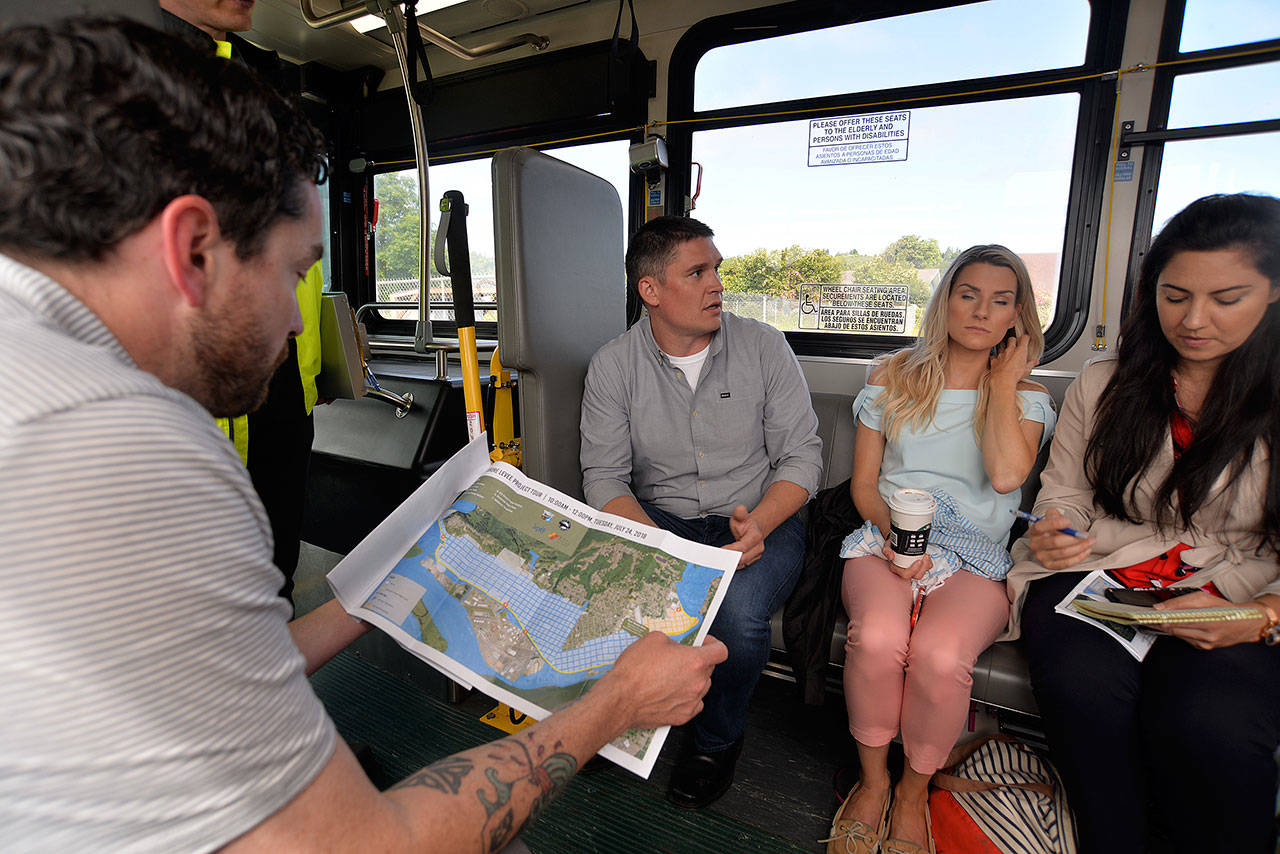A handful of state and federal representatives visited Aberdeen on Tuesday to learn about the North Shore Levee project and tour its proposed building sites. Aberdeen City Engineer Kris Koski took the group on a bus to several places where the levee would be built and explained the financial logistics.
After hearing about the project, Rep. Steve Tharinger from the 24th District said he understands its importance but was unsure if the state would be able to completely fund it.
“There’s no question about the need to do the project and protect Aberdeen, it’s a question of how we get the funding to make that happen,” said Tharinger.
On Tuesday’s tour with state representatives and staff for U.S. representatives and senators, some stops included the western bank of the Wishkah River in Aberdeen, where some homes would be left outside of the levee’s protection due to how close they are to the water.
The tour comes at an important time for the project’s funding, as state organizations are currently formulating proposed budgets for next year’s state capital project funds.
The North Shore Levee Project is intended to remove approximately 3,500 properties from the current FEMA floodplain map for the Aberdeen/Hoquiam. It would result in a levee that is 5.6 miles long and would mostly sit between the cities and the waterfront. Doing this would also remove those properties from the mandatory flood insurance requirement, saving locals millions and increasing property values. The levee’s height ranges from 3 to 5 feet, and would consist of a mix of earthen berms, sheet pile and concrete walls.
Both cities want to primarily use earthen berms to build the levee, as they are less expensive than metal sheet walls.
The levee’s design is already funded, and is expected to be done by June 2019, when project managers say they’d be ready to begin construction.
The project’s construction cost is estimated at $78 million, and Aberdeen and Hoquiam are hoping to get the majority of that funded through next year’s biennial capital budget in grants from the Office of the Chehalis Basin. In every biennial budget, the organization typically gives a grant to one major project in the range of $50 million.
Andrea McNamara Doyle, director of the Office of the Chehalis Basin, said it’s unlikely they can fund the entire project, but added they will “definitely” be looking to fund a large portion of it.



